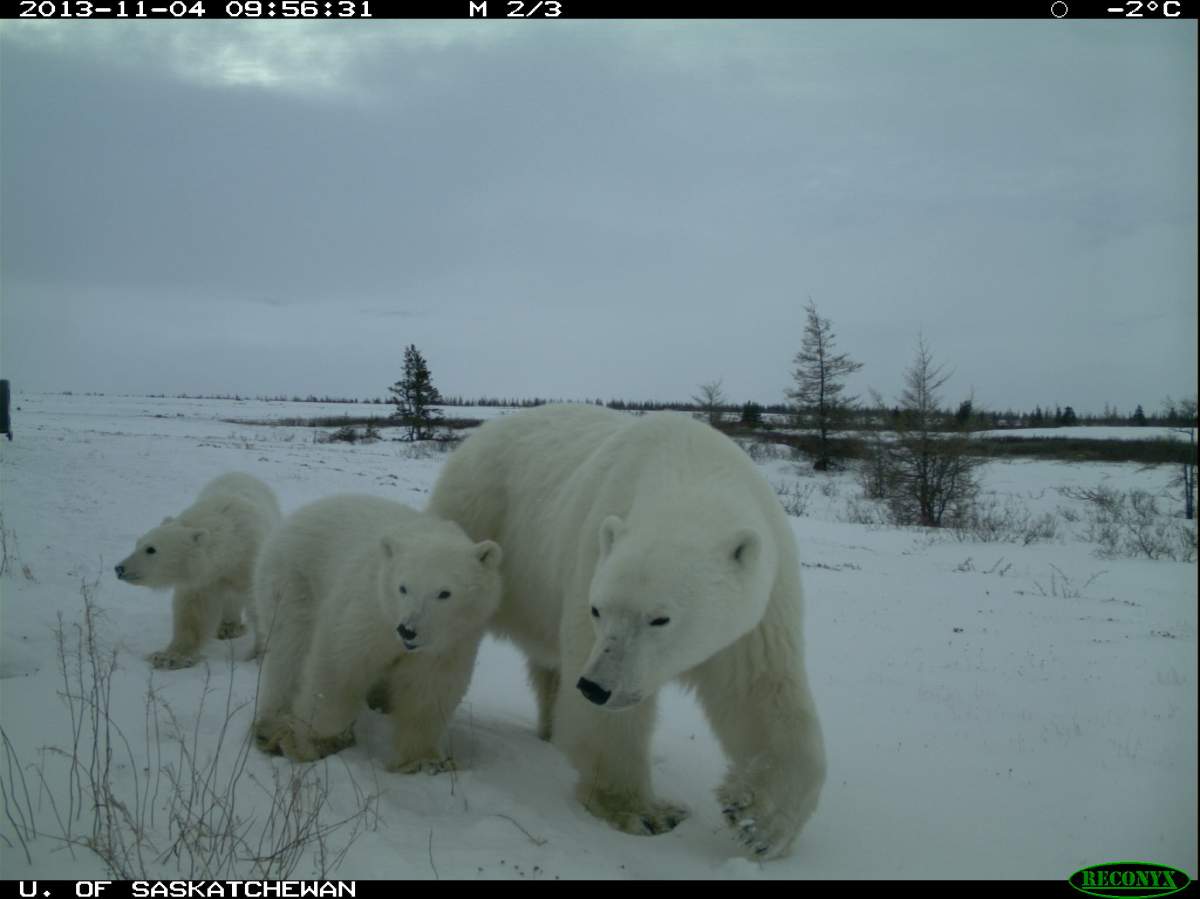University of Saskatchewan researchers said they made an unprecedented finding – all three species of North American bears in the same subarctic region.

The researchers documented polar bears, black bears, and grizzlies in Wapusk National Park on the west coast of Hudson Bay near Churchill, Man.
“These sightings are consistent with expected ecological responses to the amplified effects of climate change on high-latitude ecosystems,” said Douglas Clark, a conservation scientist at the U of S School of Environment and Sustainability.
“Our observations add to growing evidence that grizzlies are substantially increasing their range in northern Canada.”
Researchers said they observed the bears between 2011 and 2017 using motion-activated cameras.

Get breaking National news
During the observation period, which was done at the request of Parks Canada to investigate polar bear patterns, researchers recorded 366 polar bears, 25 black bears, and 10 grizzlies.
WATCH BELOW: Grizzly bears at Saskatoon zoo to begin 3rd hibernation

What was new in the observations, said Clark, were the grizzlies.
“It’s likely that they will benefit the most because they have been known to dominate the other two species elsewhere, for instance eating both black bears and polar bears, or displacing them,” he said.
However, Clark said, large black bears could have the upper hand when encountering a young grizzly, while smaller species of bears will modify their behaviour to avoid grizzlies.
Clark said the big question is how the interactions will affect bear conservation and management efforts.
He said the overlap could be due to climate change as bears seek out new or expanded habitats for food sources.
“This range overlap shouldn’t be viewed as a threat to any of these bears, but should be understood as an ecological response to environmental change.”
He added Wapusk is at the convergence of the boreal forest, tundra, and ocean ecosystems that are all changing quickly with climate change.
The findings were published in the peer-reviewed journal Arctic Science.


Comments